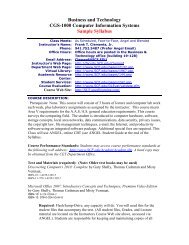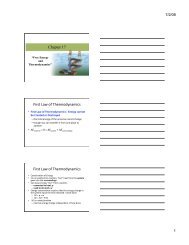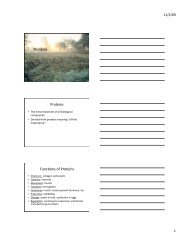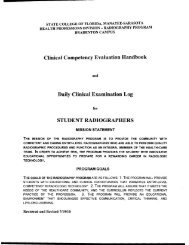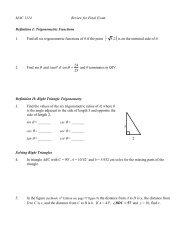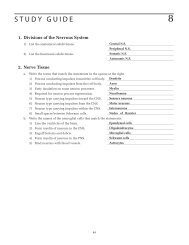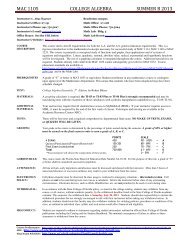Life and Nature - Scf - State College of Florida
Life and Nature - Scf - State College of Florida
Life and Nature - Scf - State College of Florida
Create successful ePaper yourself
Turn your PDF publications into a flip-book with our unique Google optimized e-Paper software.
W.B. Yeats<br />
The turning point from Irish nationalism to mythology, mysticism, <strong>and</strong> spiritualism started<br />
after Yeats began to believe in the “collective unconscious” by Carl Jung, which branches from<br />
“stream <strong>of</strong> consciousness.” Jung <strong>and</strong> Yeats believed “collective unconsciousness” was “a sort <strong>of</strong><br />
universal memory shared by all human beings” (1172). Religion began coming back into Yeats‟ life<br />
after discovering this term because he had the notion “that the poet, like the priest, the prophet,<br />
<strong>and</strong> the magician, tapped into the collective unconscious” <strong>and</strong> could move his audience through<br />
symbols (1172). Art, including poetry, should involve a quasi-religious function. He declared that<br />
he “made a new religion, almost an infallible church <strong>of</strong> poetic tradition” (qtd. in Booth 1172).<br />
As for his writing styles <strong>and</strong> works, Yeats “eschewed the free verse popular with his<br />
contemporaries… [<strong>and</strong>] experimented with various meters <strong>and</strong> verse forms, ranging from ballad<br />
stanza to ottava rima” (1172). Ballad stanzas, known as quatrains, are frequently found in folk<br />
ballads. Ottava rima is an Italian rhyming stanza form consisting <strong>of</strong> eight lines in iambic<br />
pentameter. These different shifts can be found in multiple poems, such as “The Lake Isle <strong>of</strong><br />
Innisfree” (1890) from his early works, to mid works such as “All Things Can Tempt Me” (1910)<br />
<strong>and</strong> “Easter 1916” (1916), to later works like “Leda <strong>and</strong> the Swan” (1923), “Sailing to<br />
Byzantium” (1923), <strong>and</strong> “Byzantium” (1927). Many poets like Emily Dickenson <strong>and</strong> Henry<br />
Thoreau became famous <strong>and</strong> were awarded for it after they had died, but by the age 58, Yeats<br />
had already won the Nobel Prize in Literature in 1923 “for his always inspiring poetry, which in a<br />
highly artistic form gives expression to the spirit <strong>of</strong> a whole nation” (qtd. in “The Nobel Prize in<br />
Literature 1923”). On January 28, 1939, W.B. Yeats passed away in Menton, France. He was<br />
initially buried at Roquebrune-Cap-Martin in France, but was moved to Drumcliffe, County<br />
Sligo in eastern Irel<strong>and</strong> in 1948.





